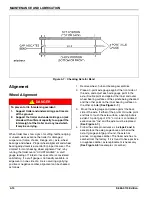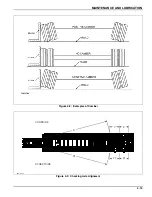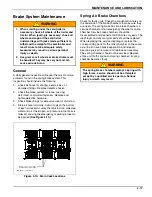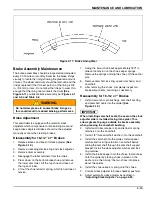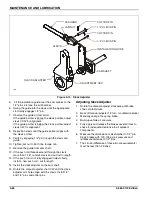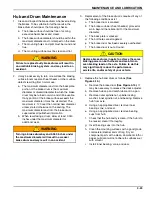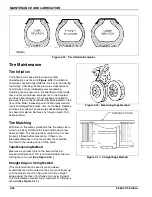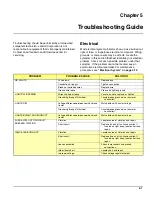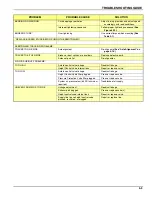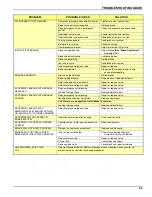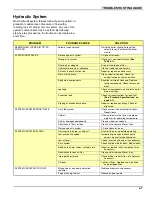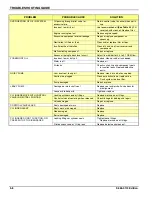
MAINTENANCE AND LUBRICATION
4-21
Automatic Slack Adjuster
The semitrailer automatic slack adjusters provide the
means for routine brake adjustment to compensate for
lining wear. Inspect slack adjusters every 2,000 miles to
assure correct operation.
CAUTION
Operational Check
1.
Block wheels to prevent vehicle from rolling.
2.
Check that the push rod is fully retracted, apply air to
release spring brake
3.
Turn adjustment hex counterclockwise to create an
excessive clearance condition. (A ratcheting sound
will occur.)
4.
Make a full service brake application. On release,
allow sufficient time for brake to fully retract. During
the brake release, observe rotation of the adjustment
hex (attach a wrench on the hex to make this
movement easier to see). This rotation indicates that
an excessive clearance condition has been
determined by the slack adjuster, and it is making an
adjustment to compensate. On each subsequent
brake release the amount of adjustment and push
rod travel will be reduced until the desired clearance
is achieved.
5.
The push rod stroke should be 1-1/2” to 2" with an
100 to 105 PSI service brake application.
6.
Measure the movement of the push rod from the
completely released position to the applied position
by marking the push rod where it exits the air
chamber before and after application.
7.
If the brakes have been running tight, the control arm
location should be checked.
WARNING
Replacing Slack Adjuster
1.
Chock wheels to prevent vehicle from rolling.
Release spring and service brake. Air chamber push
rod must be
fully released.
2.
To maintain a fully released parking brake, a
minimum of 105 psi reservoir pressure must be
maintained. If air pressure is not available the spring
brake must be manually caged.
3.
Remove the existing slack adjuster and clevis - DO
NOT REMOVE EXISTING JAM NUT
4.
Install the new clevis (with 1/2" pin) onto the pushrod
up to the jam nut -DO NOT TIGHTEN JAM NUT.
The installation guide must be used when
installing or reinstalling automatic slack adjuster.
Failure to do so may result in improperly adjusted
brakes which may cause brake damage or lead to
brake failure.
If the adjuster appears not to be operating, check
the other brake components for proper function
and eliminate any binding. Recheck the automatic
slack adjuster. If the adjuster is not functioning,
the unit must be replaced because failure of
proper adjustment function will result in loss of
brakes.
Summary of Contents for 855C HD Series
Page 2: ......
Page 6: ...iv F 669 0113 Edition...
Page 48: ...4 20 F 669 0113 Edition MAINTENANCE AND LUBRICATION Figure 4 12 Axle and Brake Assembly...
Page 65: ...TROUBLESHOOTING GUIDE 5 9 Notes...
Page 66: ...5 10 F 669 0113 Edition TROUBLESHOOTING GUIDE...
Page 67: ......








